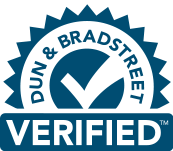Companies are increasingly purchasing and developing technologies that improve and streamline customer experiences, this translates to an increase in business and customer retention. On top of that, they are being used to improve internal communications among employees, which increases productivity and efficiency.
Improving customer experiences should be at the top of every company’s list of main priorities. Investing in good customer service tools, like customer portals, can improve retention rates and increase profit.
However, in order to reap those benefits, your customer portal not only needs to be user-friendly, intuitive, and provide value but your customers also need to know the portal exists and need to understand how it will improve their workflow and experience.
Providing a self-service online portal option has become even more important now as in-person contact is constrained and call centers are being overwhelmed.
Whether your customers are checking the status of an order, managing their accounts, paying an invoice, searching for the correct solution, or just want to connect with a team member, “There’s an app for that.”
Naturally, that creates competition.
How does your portal capture attention? How do you quickly and effectively explain what your portal does? How do you convince would-be users to take the plunge and sign-up? There are many answers to all of these questions, of course, but one that pops up time and again as a compelling factor is a great portal demo.
What is a portal demo?
A portal demo is a video that demonstrates your online portal – what it does, and how it works – giving your audience a quick, easy understanding of what it offers.
It generally uses either direct screen recordings from your portal – or an illustrated recreation of the portal interface – to demonstrate the real-world functionality and experience your users can expect if they sign-up.
There are obviously exceptions, but the majority tend to be short videos, around the 30-60 second mark.
Many of them appear on the actual portal sign-up page on your website, but – as we’ll cover throughout the article – they can be used in a variety of places, for a variety of purposes.
Benefits of a portal demo
- Help convert ‘maybe’ users. We all know it isn’t easy to drive traffic onto your portal sign-up page. When people arrive on that page, you want to make the most of the opportunity. Video is a great way to optimize the conversion rate – it gives your audience the quickest possible route to that ‘eureka’ moment where they understand what you’re offering. Our research suggests that 74% of people have been convinced to buy or download a piece of software or app by watching a video.
- Build awareness on different channels. Few pieces of content are quite as versatile as a portal demo. Not only can you use it on your website pages – but you can also use it in your email announcements, upload it to YouTube, use it for an online paid video ad, use it at events and conferences, incorporate it into sales/investment pitches and so much more.
- Build realistic expectations. Portal demos let you get super clear about what your portal can do – as well as what it can’t. This sounds slightly counterintuitive, but building realistic expectations and clear understanding about what your portal offers to would-be users is important, since it minimizes the people who sign-up expecting something it can’t deliver.
- Reduce fallout and negative reviews. The net result of setting those realistic expectations is that the people who sign-up for your portal are as likely as possible to get maximum value from it. This is really significant since studies often show that most apps are deleted within a week – often because the app doesn’t do what the user was expecting it to do.
- Hold attention – Most portal marketers are on-board with the idea of using screenshots and text descriptions to explain their portal. But video offers so much more – it gives a clear picture of how those different features fit together into a portal experience, as well as an easy-to-digest run-through of key features and functionality. The bottom line? People like to learn using video. In fact, when asked how they’d most like to learn about a new product or service – two-thirds of people (66%) said they’d most prefer to watch a short video (comfortably the most common answer.)
- Differentiate from the competition. Video is a sensory experience, engaging many different learning styles – every stylistic decision you make says ‘something’ about your portal, your brand, your vision. The music you choose, the colors you use, the voiceover style. This gives you a great chance to consciously and subconsciously hit home some significant messages about who you are and what you’re offering, which can bring your ‘brand personality’ to the forefront – and help differentiate from others in the market.
Using a portal demo to increase sign-ups and adoption
So, how do you go about creating a great demo video for your portal? We’ll split the process into two parts: creating your video, and then promoting it. Both are equally important!
Creation
1. Get some inspiration
Many portal marketers don’t necessarily have video marketing experience, and the risk, therefore, is to come into the process without a clear idea of what you actually want.
This is an important first step: video is simply too broad a medium, with too many choices and variables, to come into this without at least a rough idea of what you’re looking to achieve.
It’s always a good idea to check out your competitors to see what sort of videos they’re using – which are working? Which are not as effective? How would you like to position differently – and what would you like to emulate?
Look beyond your industry, too
We’ve put together a portfolio of some of the portal demo videos we have put together, check them out on our Technology Adoption Video Portfolio page.
Simply by taking a look at what others are doing, you’ll often be able to isolate a rough idea of what you like and dislike. And, as always, if you’re struggling – get in touch with our team and we can walk you through the process to find a style that works.
2. Create a brief
The next step we recommend is to create a brief. This sounds intimidating, but it’s really just a way to take that messy idea dump you assembled in step 1, and turn it into something coherent and understandable.
As a minimum we’d recommend creating a document that sets out:
- Your ideal video length
- 2-3 key features to get across in the video (your audience will remember a maximum of 3 things)
- Call to action – what do you want the viewer to do after watching?
- Style – list 2-3 examples you like, as well as noting what you like about them.
It’s important, even at this stage, to keep in mind where you would like to use this video. If you plan to use it as a paid video ad, each ad platform has its own rules and guidelines – the last thing you want is to invest in creating a video that subsequently gets rejected. It also might just mean that you create an alternate version of the main video.
3. Write a script
Based on all of this, it’s time to write a script. Different people use different script documents and formats but ours is a simple double-column document, where the left-hand side of the document is a description of what will be happening on screen and the right-hand side is the voiceover (as it will be read, verbatim). Each row in this table is a different scene or section of the video.
Writing the voiceover: Our rule of thumb is that a well-paced, professional voiceover is read at around 130 to 146 words per minute, so use the following formula to estimate your video length:
(Voiceover word count ÷ 130) x 60 = Estimated video length (in seconds)
Writing the action-on-screen: There are two keys here. One is detail – include as much information as necessary to express your vision for how the video will be pieced together. Where do you click, what data do you enter, what happens within the portal itself? The other is pacing – and it’s impossible to overstate how important this is.
Try and roughly estimate how long each section of action-on-screen will take to play out to make sure you don’t get any excessive pauses or rushed voiceover sections. You want each section to be smooth, clear to understand – but not overly sluggish. (Scriptwriting is included in our video packages!)
4. Create the video (or hire an expert)
This is where many people start – and it can really undermine them, since they haven’t established a clear idea of what they want to achieve and get across.
If you’re looking to record the video yourself, you can make the recordings on your screen using a tool like Quicktime which comes pre-installed on most Apple devices.
You might also want to include a voiceover – which you can record yourself if you have the right setup, or find a professional using a freelancer service or hire an expert video agency like DigiVid360 (shameless plug).
A DIY video is always appealing because of its low cost, and it’s often a good way to validate the idea of actually having a video – but don’t forget there’s an opportunity cost here, too. It’s often a false economy – as, with all marketing material, the quality (or lack thereof) does say a lot about your brand, product, or service. A potential user watching your video is an opportunity to really wow them and excite them about your portal, and, given how widely a great video can be used, it’s often worth pushing the boat out and getting something really special produced. As the saying often goes – buy cheap, buy twice!
Promotion
One of the most appealing things about a demo video is its versatility – how many ways you can use it. So here are just a few ways…
- Add it to your website, so people who end up there can get a flavor for how it works and what it does within seconds.
- Upload to YouTube. We’ve mentioned it previously, but YouTube is the web’s 2nd largest search engine. Having a presence on there can boost discovery – particularly if you optimize the video around keywords that people might search for our of interest, e.g. ‘manage laboratory orders’ or ‘pay my bill.’ If you can be prominently positioned when people search for these keywords, you stand a great chance of reaching people who’ve never previously heard about your portal.
- Use it on your social channels – you can use snippets of your video for your profile imagery e.g. Facebook profile video. This means the people who just land on your social channels can immediately get that little bit of ‘extra’ that shows them how your portal works.
- Paid social ads. Social media advertising is great because it lets you target just the right people with just the right message. If you’ve got an online portal for a very specific type of audience, and you’re struggling with organic reach, advertising is a great (and instant) way to remedy that. Our top tip here? Start small and build up. You don’t want to throw money at advertising when you aren’t sure what the ROI is going to be. Start small, find your groove, validate the idea – then scale.
- Put a thumbnail in your email signatures. Every email that goes out of your company is an opportunity to educate people about your portal and how it works.
- Show the video at events. Have the video playing behind you at events, exhibitions, and before online events. Include it in sales and investment pitches. Diversifying your message in this way is a slick, professional way to show what your portal is and how it works!
- Track the impact (and be ready to improve). As the old saying goes, you can’t manage what you don’t track. Most channels you upload your video to will offer some form of analytics, which will allow you to monitor how many views you’re getting, how that compares to the overall traffic to your page, how much of the video your viewers watch, and what they do after watching. If you identify areas of underperformance – maybe there’s a heavy drop off or people aren’t converting – think about trying again, highlighting different features, changing up your messaging, and trying a fresh approach. As always, it would be amazing if you absolutely nailed it the first time round – but marketing is rarely quite that simple!
Thanks for reading
A portal demo is a brilliant way to encapsulate the essence of your portal and get across all the main features and selling points in a beautiful 30-60 second package.
In this article, we’ve shared a few of our top tips in terms of creating and promoting that video to achieve the best possible result.
Once you’ve had success with this first video, you and your team will see opportunities to use videos at many different stages of portal adoption beyond just initial awareness and sign-up. First-time login intro videos, tips and tricks videos, feature announcements, and customer testimonials are just some of the other possibilities.
If, at any stage, you’re struggling – then feel free to get in touch with our team here at DigiVid360. We’ve made many demo videos for customers just like you and would be happy to share further info and insight!
—–
This was adapted from an original post by Wyzowl, we’ve adapted specifically for online portal applications that businesses create for their customers including physicians, patients, and consumers.






